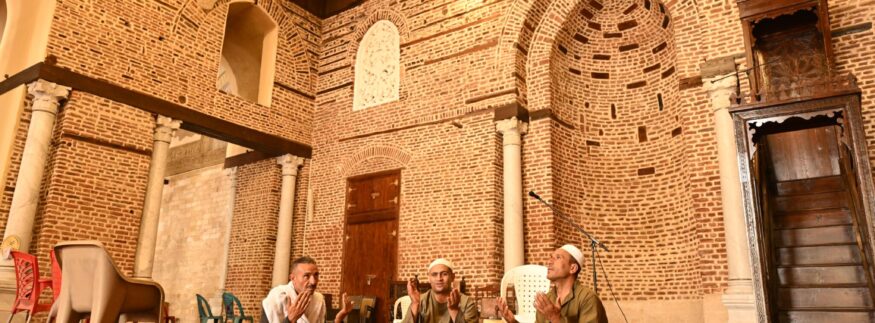Al Zahir Baybars Mosque Reopens After 15 Years of Renovation
Al Zahir Baybars Ancient Egypt arts & culture Culture Mosques
Farah Fahim
Image via The National News Mena
June 4th marked an important day in the revitalisation of Egyptian history with the reopening of the Al-Zahir Baybars Mosque in collaboration with Kazakhstan. The ceremony was held on the Day of Kazakh Culture in Egypt, and many high-level Kazakh and Egyptian officials were among the attendees, including Kazakhstan’s Senate Chairperson Maulen Ashimbayev, who presented a high state award – The order of Dostyk of the first degree – to Egypt’s Grand Imam of Al-Azhar, Sheikh Ahmed El-Tayeb.

Image via The National News Mena
This isn’t the first project that Kazakhstan and Egypt have collaborated on. The Nur-Mubarak Egyptian University of Islamic Culture was also a collaboration between the two nations, and it opened in 2003 in Almaty. Ashimbayev agreed with the Grand Imam that Kazakhstan and Al-Azhar University have similar thoughts on the promotion of peace and the importance of theological education and that open channels of communication to encourage interfaith dialogue should exist.
The restoration of Al-Zahir Baybars was an agreement between Kazakhstan and Egypt signed in 2008 when Kazakhstan pledged $4.5 million to the cause. Egypt’s religious endowments minister, Mokhtar Gomaa, said that “the opening follows 225 years of not operating as a mosque”.
The reconstruction proved difficult because of deterioration due to its position in a low part of Cairo which quickly accumulates groundwater and causes damage to the structure.

Image via The National News Mena
While the deal for renovation was made in 2008, work was halted due to the political unrest caused by the 2011 uprising. It was later resumed in 2018 and finished in 2022. The mosque was partly renovated and partly reconstructed, depending on the level of damage in each area. Repairs were made to its entryways using a method that alternates rows of light and dark stones, characteristic of Islamic Architecture. The interior remodels followed designs from other mosques of that era.
Al-Zahir Baybars Mosque: A History
Image via Ministry of Tourism and Antiquities
Sultan Baybars, born in Kazakhstan 800 years ago, ordered the mosque to be constructed in 1266 at the beginning of the Mamluk rule in Egypt. It is one of the oldest Mamluk mosques and comprises four arcades (Riwaqs) around a central courtyard, with the largest one being the Qibla Riwaq. Many of its magnificent architecture is lost today, such as the wooden dome that once existed. After centuries of being used for prayers, it deteriorated during the 16th century and was used as a storage facility by the Ottomans. When the French invaded in 1789, it was used as a military fort and had cannons placed on its walls. Fast forward to British colonisation, the mosque was then used as a military warehouse and then a slaughterhouse until 1915. In 1918, the Committee for the Preservation of Arab Antiquities conducted repairs on certain sections of the mosque and performed restoration work on the qibla riwaq.
The mosque stands today, renovated, reconstructed and carrying within its bones the centuries of neglect and misuse, but against all odds, still shining rays of light, faith and hope on its people. Now the souls that knelt in prayer all those years ago on its floors can be felt today by those who chose to preserve it as a place of worship.
recommended
 Arts & Culture
Arts & Culture
Cairokee Touring Europe and North America in 2024
Cairokee Egyptian Artists +3 Sights & Travel
Sights & Travel



